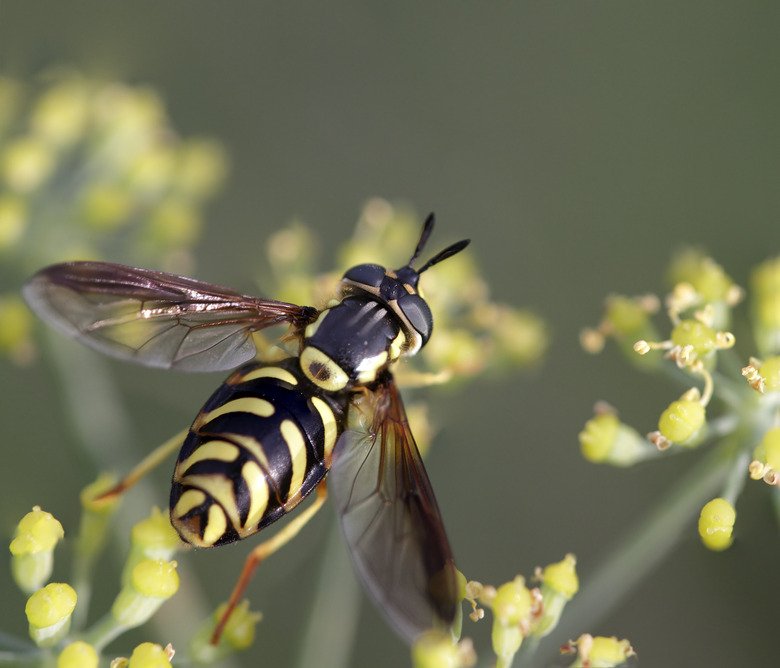The Biting Bugs & Insects Found In North Carolina
North Carolina has a warm, humid climate with mild, short winters, making it a perfect place for many biting and stinging insects. Wasps, ants, mosquitoes and flies are among the more prevalent pests found in this East Coast state. While some, like the black fly, are native, others, like the imported red ant, are immigrants from other parts of the world.
Wasps and Fire Ants
Wasps and Fire Ants
Paper wasps, found in North Carolina and throughout temperate climates in North America, are reddish-brown to black, have long legs and thin, spindle-shaped abdomens. Female paper wasps create a gray, paper-like nest to house their eggs in the spring. They feed their larvae caterpillars and because of this are generally considered beneficial. The greatest likelihood of a sting occurs as more wasps are born and fill the nest.
The imported red fire ant (Solenopsis invicta) is a native of Brazil. It is reddish to dark brown and ranges in size from one-eighth to one-third of an inch. It builds dirt mounds that can be dome shaped or more irregular. Currently, the imported red fire ant is considered a dangerous pest, infesting 71 of 100 counties throughout the central and eastern parts of the state. Fire ants defend their mounds by swarming and stinging intruders. Stepping on a mound can be fatal for children or those with allergies to the ants' venom. Mounds can be destroyed using insecticidal baits or sprays.
Mosquitos
Mosquitos
Mosquitoes thrive in moist, humid environments and the warm, temperate environment in North Carolina is a perfect place for these biting pests. Mosquitoes are known to carry many deadly diseases, including west Nile virus, yellow fever and malaria. The Department of Entomology at North Carolina State University insists that mosquito control is a community effort and calls on residents to eliminate standing water from their properties, fill tree holes, keep swimming pools and bird baths clean and report debris or drainage problems in ditches and culverts.
Biting Flies
Biting Flies
Biting flies, like black flies and midges, are swarming insects that find eyes, ears and noses particularly interesting. Swarming people and other mammals, black flies lacerate the skin and suck the blood of their victims. They have been known to carry parasites, although this is not common in the United States. Nearly all streams in North Carolina hatch black files, which can become a nuisance when they swarm in the thousands. Staying indoors, using insect repellent and sheltering animals are effective ways to ward off troublesome swarms.
Biting midges, also called punkies or no-see-ums, are small blood sucking flies prevalent along North Carolina's coast and some inland sites. They are present through most of the warm weather seasons and personal insect repellent is recommended as the best defense against these biting pests.
Cite This Article
MLA
Monks, Melissa. "The Biting Bugs & Insects Found In North Carolina" sciencing.com, https://www.sciencing.com/biting-insects-found-north-carolina-7617967/. 13 March 2018.
APA
Monks, Melissa. (2018, March 13). The Biting Bugs & Insects Found In North Carolina. sciencing.com. Retrieved from https://www.sciencing.com/biting-insects-found-north-carolina-7617967/
Chicago
Monks, Melissa. The Biting Bugs & Insects Found In North Carolina last modified March 24, 2022. https://www.sciencing.com/biting-insects-found-north-carolina-7617967/
